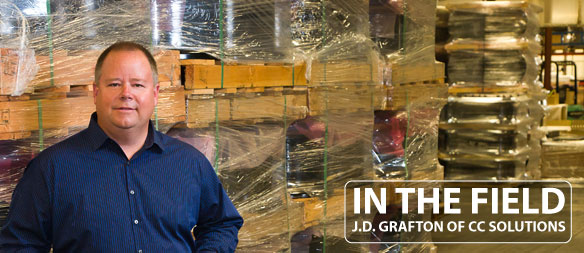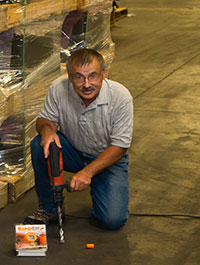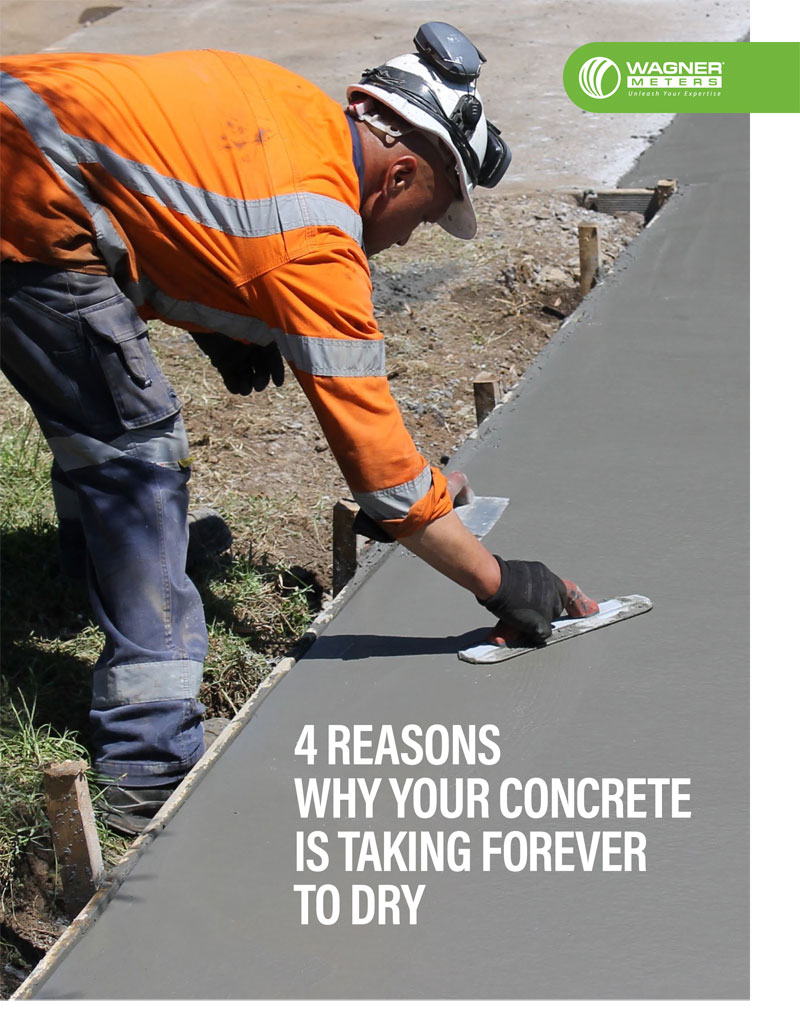The Headwinds of Change: CC Solutions Uses Rapid RH for Success
J.D. Grafton had worked for Marshall Erdman & Associates for over 15 years as a Quality Control (QC) officer in the concrete division when the call came in 2008. Times had changed and Grafton was informed that an investment group had bought the company and QC was no longer needed to uphold the new one-year warranty on concrete slabs (an industry standard).

Grafton formed his own company, CC Solutions, and put his experience to work.
Industry Standards
Grafton had already seen his share of concrete slab moisture problems and knew the problems in the industry. “I got to see it after your building is 20 or 30 years old,” he says. “I got the joy of being called back to all these jobs.”
In the mid-1990s, Grafton had witnessed multi-pronged concrete slab moisture problems. A 30-year-old existing floor would lie beneath newer rubber floor coverings. Installers had certified slab readiness using anhydrous calcium chloride (CaCl) testing (another industry standard). Grafton would return to the site a few months later, sometimes up to three years afterward, to find floors curling up due to alkali problems.
“Everyone was caught unaware,” recalls Grafton, “but It`s almost hard to convince a facility owner…it’s not the flooring, it’s the concrete.”
 CaCl (which measures a slab’s moisture content by calculating the surface moisture vapor emissions rate) had gained acceptance as the industry’s standard over the previous several decades. However, Grafton points out, the test held no pedigree; its credibility and reliability were unproven. Erdman’s forensic concrete test results showed numerous moisture problems that were undetected by the MVER method. Slabs with unknown levels of concrete moisture equilibration began to fail. Contaminants rose to the concrete surface due to the slab’s excess moisture. Adhesives broke down, and floor coverings curled up.
CaCl (which measures a slab’s moisture content by calculating the surface moisture vapor emissions rate) had gained acceptance as the industry’s standard over the previous several decades. However, Grafton points out, the test held no pedigree; its credibility and reliability were unproven. Erdman’s forensic concrete test results showed numerous moisture problems that were undetected by the MVER method. Slabs with unknown levels of concrete moisture equilibration began to fail. Contaminants rose to the concrete surface due to the slab’s excess moisture. Adhesives broke down, and floor coverings curled up.
“What are we finding? We’re finding all of it,” says Grafton. “Less than 10 percent of concrete testers have seen all the sides of this coin.”
The New Kid
Fortunately for Grafton and his growing business, there was a better solution. The new kid on the block was a new test method: in-situ relative humidity (RH) probes inserted into concrete slabs; the new tool was Wagner Meters’ Rapid RH®. “We went to Rapid RH because…the accuracy is certified and it doesn’t need to acclimate past its initial point,” says Grafton. “We could stick it in there, read it and trust it. We went that [way] and we stuck with it.”
Wagner’s Rapid RH was designed with a thorough understanding of concrete moisture content fundamentals. Slabs hold moisture which is part of a concrete mixture. Once poured, the slab’s moisture content migrates from the bottom of the slab to its surface in order to evaporate. The Rapid RH uses embeddable probes containing Smart Sensors that can test at 40% depth of the concrete, a depth proven to present a predictable final RH value, on a slab drying from one side.

Free Download – 4 Reasons Why Your Concrete Is Taking Forever to Dry
Grafton articulates the Rapid RH advantage: quick testing and accurate RH readings. “The process behind the Rapid RH is solid,” states this career quality control professional. The testing is fast and accurate, as Grafton has verified. “We started to run calibration tests. They would be about two percent from what the solution was.” This usually in a one hour period of time.
It’s what concrete quality control professionals like Grafton need in the field: accurate and reliable concrete slab moisture measurement. Wagner Meters has evolved with the times to reach the era of cost-effective, dependable RH testing: the Rapid RH.
Visionaries see it coming so contemporaries may benefit.
Wagner Meters is a family-owned American business that aims to provide solutions in moisture measurement technology that will enhance the quality and value of each customer’s project. With an almost 60-year legacy of innovation, Wagner continues to be a resource for both individual craftsmen and high-performance commercial endeavors.
Related Posts via Taxonomies
Last updated on June 8th, 2021



